Six Ways to Add Rigor by Deepening Thinking
By Karin Hess

A misguided view of rigor can make learning inaccessible to many students who can think deeply. Teachers need to know how to set the stage to uncover their thinking and help them deepen their understanding.
Raising expectations is NOT as simple as assigning difficult texts to read or using higher-order verbs (e.g., analyze, synthesize) to describe what students are going to do during a lesson.
How cognitive rigor works
Cognitive rigor is created by the interaction of three key factors: content complexity + cognitive engagement + the intended scope and depth of the learning activity.
1. Content Complexity: Complex concepts and strategies (e.g., concrete versus abstract ideas; literal versus figurative interpretations; practical applications versus theories) always require supports to increase access and engagement.
2. Cognitive Engagement: Engagement with the content (sometimes defined using Depth-of-Knowledge/DOK levels) describes how deeply we want students to apply their understanding to complete a task – from surface-level recall to conceptual understanding, problem solving, or in-depth extended thinking.
We know from brain research that emotional engagement precedes deeper cognitive engagement. When students first make personal connections to new content – “what do I already know about this topic?” or “how is this problem relevant to me/my world?” – doors to complex mental processing and problem-solving begin to open.
3. Scope and Depth: The scope of the planned learning or assessment activity influences the overall cognitive rigor, especially when multiple sources must be analyzed and interpreted or a complex product of learning is to be developed (e.g., research project, podcast, multimedia presentation).
Increasing rigor must go hand in hand with supports that help every student access the meaning of the content (a new strategy, concept, or theory) before they are asked to explain it, apply it, or analyze it.
Providing background knowledge related to a topic prior to introducing a complex text or breaking down a complex strategy into several steps are examples of strategically scaffolding complex content. Even adult learners benefit from scaffolding when tackling complex content!
6 Ways We Can Uncover Rigorous Thinking and Help Students Deepen Understanding
Teachers can elicit evidence of cognitive rigor by asking students to brainstorm possible solutions instead of asking for one correct solution; by using feedback to refine their performance, rather than telling students what to correct; or by having them practice using metacognitive skills while monitoring their own learning processes.
I’ve identified six ways to move students’ thinking to deeper levels of understanding and created a “student-friendly” infographic of the six strategies. This can be printed as a poster or cut apart and used as task cards as metacognitive prompts when students are engaging in collaborative discourse or working through a complex challenge.
Some teachers print and use the cards to create cubes that can be rolled like dice to randomly select a prompt for small group discussions or reflective journaling.
Student Strategy Tips
(click a graphic to enlarge – resource links offer more info)
We create opportunities for cognitive engagement and deeper thinking when asking students to …
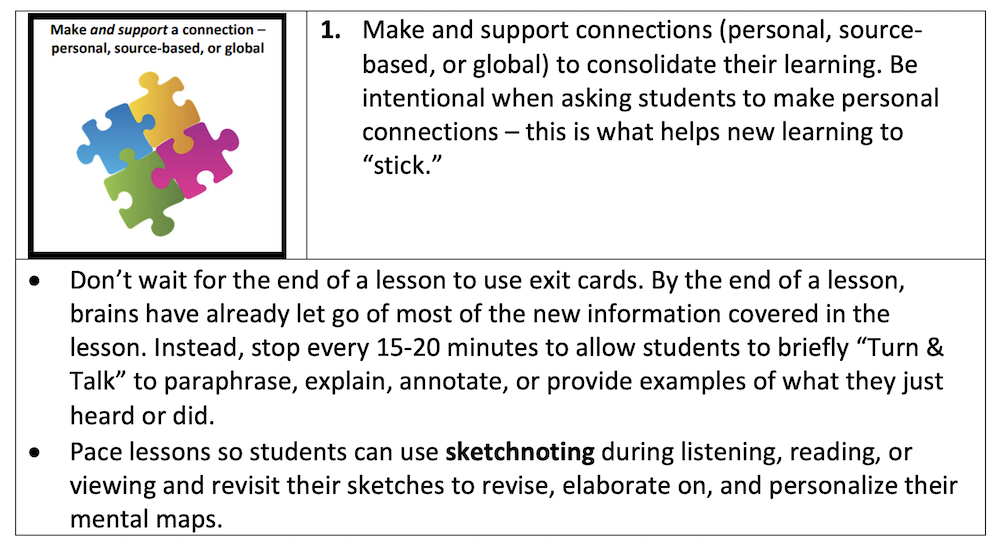
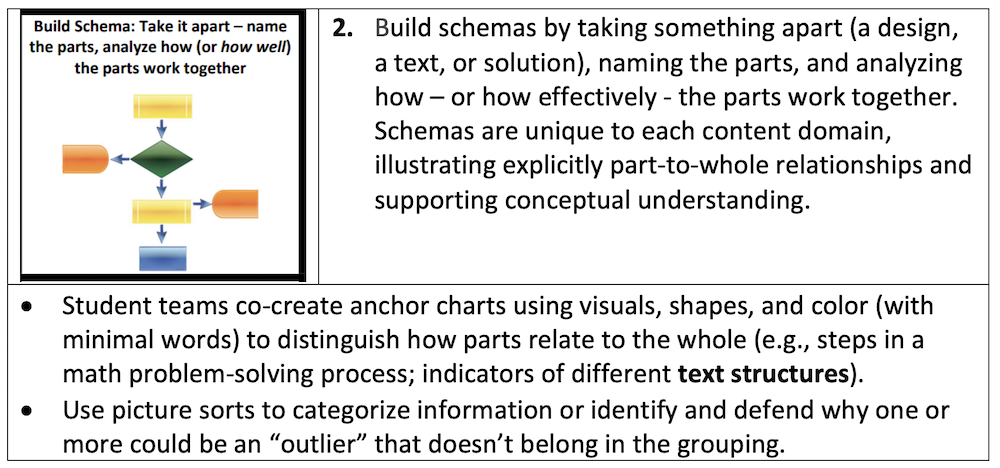
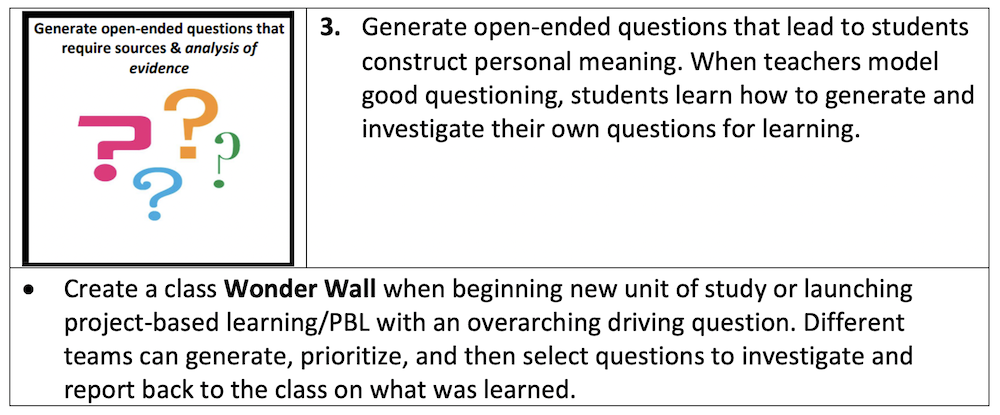
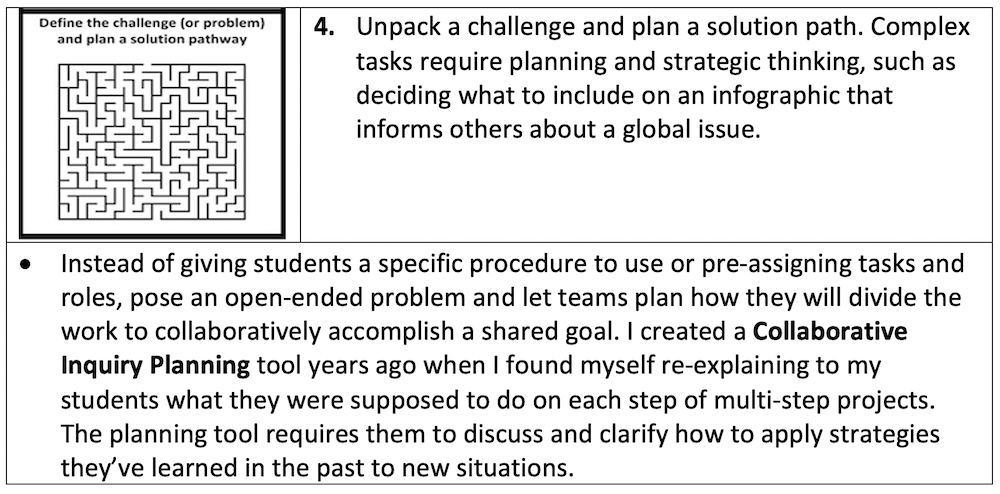
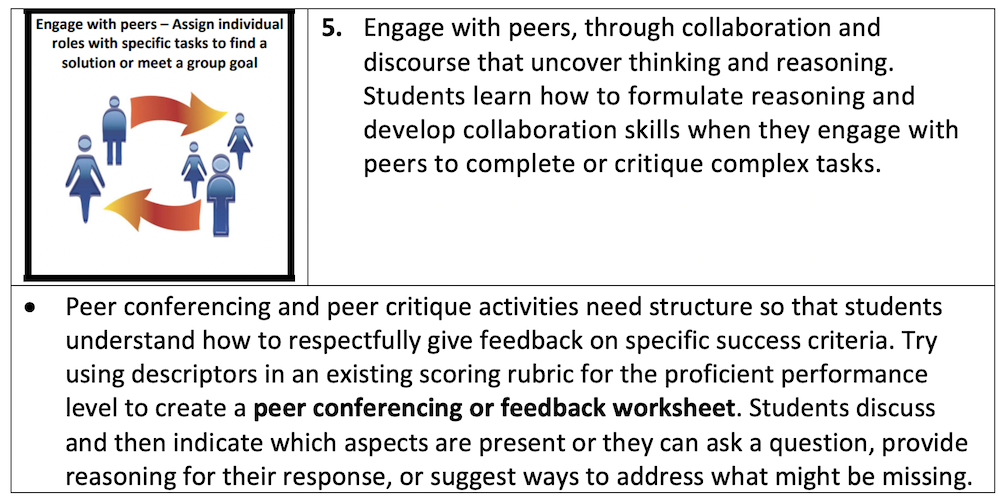
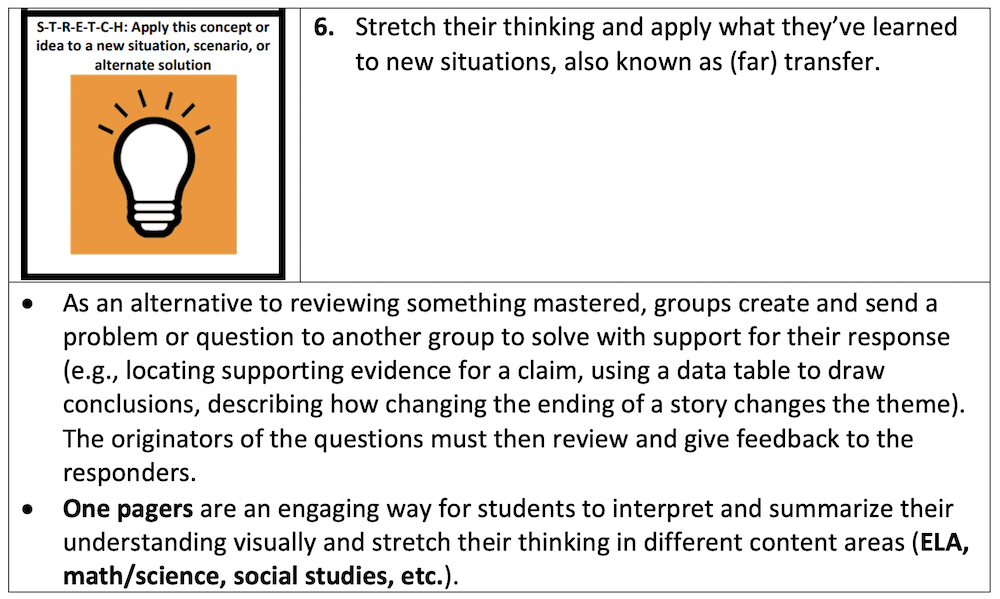
Conclusion
When we know what rigorous thinking can look and sound like, we can help students to use many of these strategies in almost any lesson.
Also see Karin’s popular MiddleWeb article:
Five Metacognitive Tools to Reveal Hidden Learning
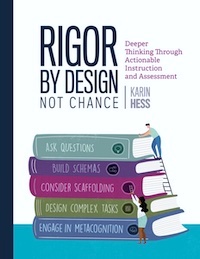
Karin is a former middle school teacher and school administrator. She is recognized internationally as a leader in applying cognitive rigor, depth of knowledge (DOK) and learning progressions to the development of state and school-based curriculum and assessment systems. She can be contacted through her website www.karin-hess.com, where teachers can find many helpful free resources.

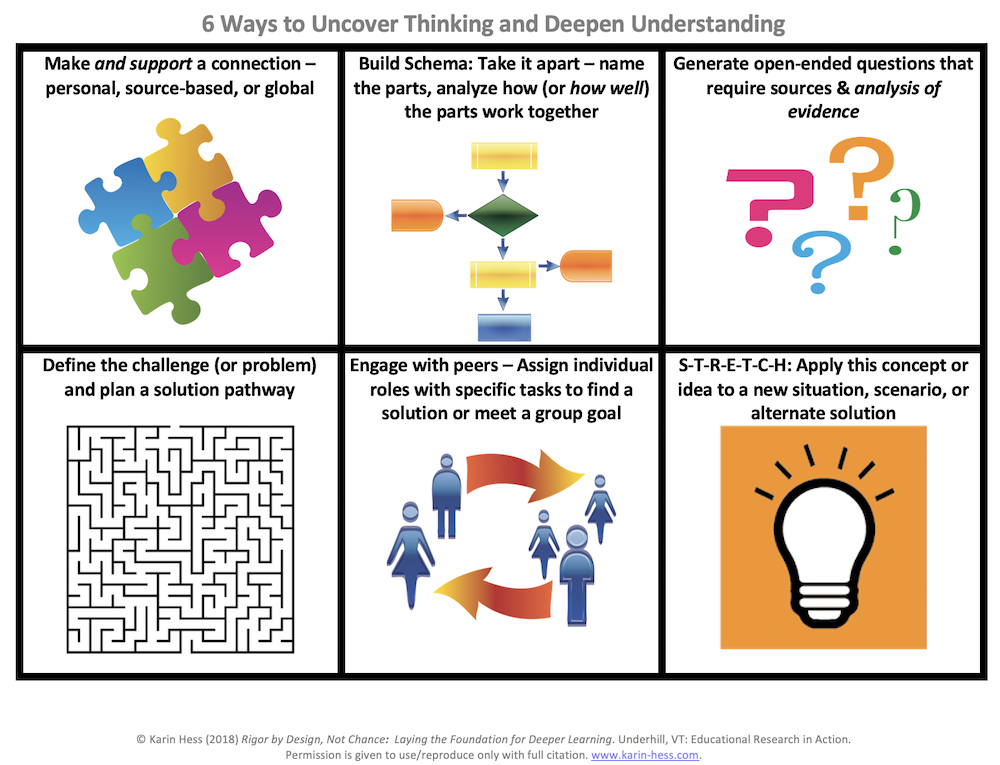






























My school has focused on providing students with rigorous instructions for a while. We even developed our definition of rigor during one of our PDs. “Rigor engages students through productive struggle and collaboration in a positive learning environment” (Desert View Intermediate School).
As you have mentioned, we all have a different view of what rigor looks like in the classroom. In my school setting, rigor can provide various tasks suitable for additional students, while other colleagues may say it gives more work for students.
I appreciate the steps you provided to increase rigor in our classrooms. Clark University (2021) also confirms that scaffolding must follow rigor to improve student learning experiences (para. 2). Most of our students perform two grade levels below, suggesting they need great accommodations and support. I will improve my practice by considering the recommendations you have provided in the graphic organizer- “6 Ways to Uncover Thinking and Deepen Understanding.”
Thank you for sharing.
References
Google. (n.d.). Google slides Sign-in. Retrieved January 28, 2023, from https://docs.google.com/presentation/d/1lmO58dZ_6auZVpqS3omfDjRIYzL27G7QPMCMsF2FRTA/edit#slide=id.g1cbdf2df646_1_8
Raising Rigor in the Classroom: October 2021 Bulletin. The center for excellence in teaching and learning. (2021, October 22). Retrieved January 28, 2023, from https://news.clarku.edu/cetl/2021/10/22/raising-rigor-in-the-classroom-october-2021-bulletin/#:~:text=Academic%20rigor%20describes%20scaffolded%20learning,%2C%20intellectually%2C%20and%20personally%20challenging.
Hi Jodian!
Thanks for sharing your thoughts about rigor. I aways say you can’t have rigor without strategic scaffolding – think of all of the high-performing adults who benefit from getting feedback, working with a peer, or taking a model apart to see how the parts work together. Strategic scaffolding means using different strategies for different purposes, at different DOK levels. This detailed infographic on using strategic scaffolding to deepen thinking can help.
Feel free to share your questions about these strategies, most of which are in my new book from ASCD (2023).
Hi Karin,
You made a valid point. As educators, we often do not realize that if we need help, our students also need the same amount of help.
Thank you for sharing the infographic on how to scaffold strategically. I can already tell it will be helpful. The “I can” statements can be powerful in class as students know what they need to do to achieve the objectives for each lesson. I also love that we should create anchor charts with them. This is one area I will work on improving, as I usually create anchor charts alone.
Creating anchor charts with your students is what makes the meaning behind it stick!
Rigor isn’t a four-letter word, as our (and Karin’s) friend Barbara Blackburn likes to say!